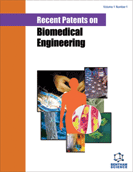Abstract
Intervertebral disc (IVD) degeneration is a major cause of clinical back pain and thus has a significant clinical impact on life quality of humans. The associated poor intrinsic regeneration capacity of the IVD, due to low cell density, avascular nature of the extracellular matrix (ECM), lack of the lymphatic vessels or innervation leads to an increased susceptibility of IVD to degenerative pathology. During disc degeneration, dehydration of the nucleus pulposus (NP), resulting from loss of proteoglycans and disorganization of the ECM causes an inefficient transfer of load between vertebral bodies triggering further degeneration or even to damage of the annulus fibrosus. Standard treatments focus on removal of the pathological disc tissue combined with spinal fusion. Aside from the high cost of these procedures, it is well known that these surgical treatments currently do not carry ideal efficacy, with post-procedure patients frequently showing recurrent back pain due to possible acceleration of disc degeneration adjacent to fused segments. Therefore there is a growing interest in the transplantation of stem cells for regeneration of the degenerated IVD. The cell-based approach is wideranging, including delivery of exogenous growth factors, introduction of therapeutic genes, co-transplantation of different cell types, and implantation of cell-scaffold composite for tissue and/or chemical engineering purposes. In this review we describe recent patents on cell-based therapy as well as other biological therapies targeting prevention and treatment of IVD degeneration.
Keywords: Intervertebral disc regeneration, scaffold, stem cell, tissue engineering, trophic factor, cytokine, cartilaginous endplates, MPs, Cell Transplantation, in vitro.
 5
5

